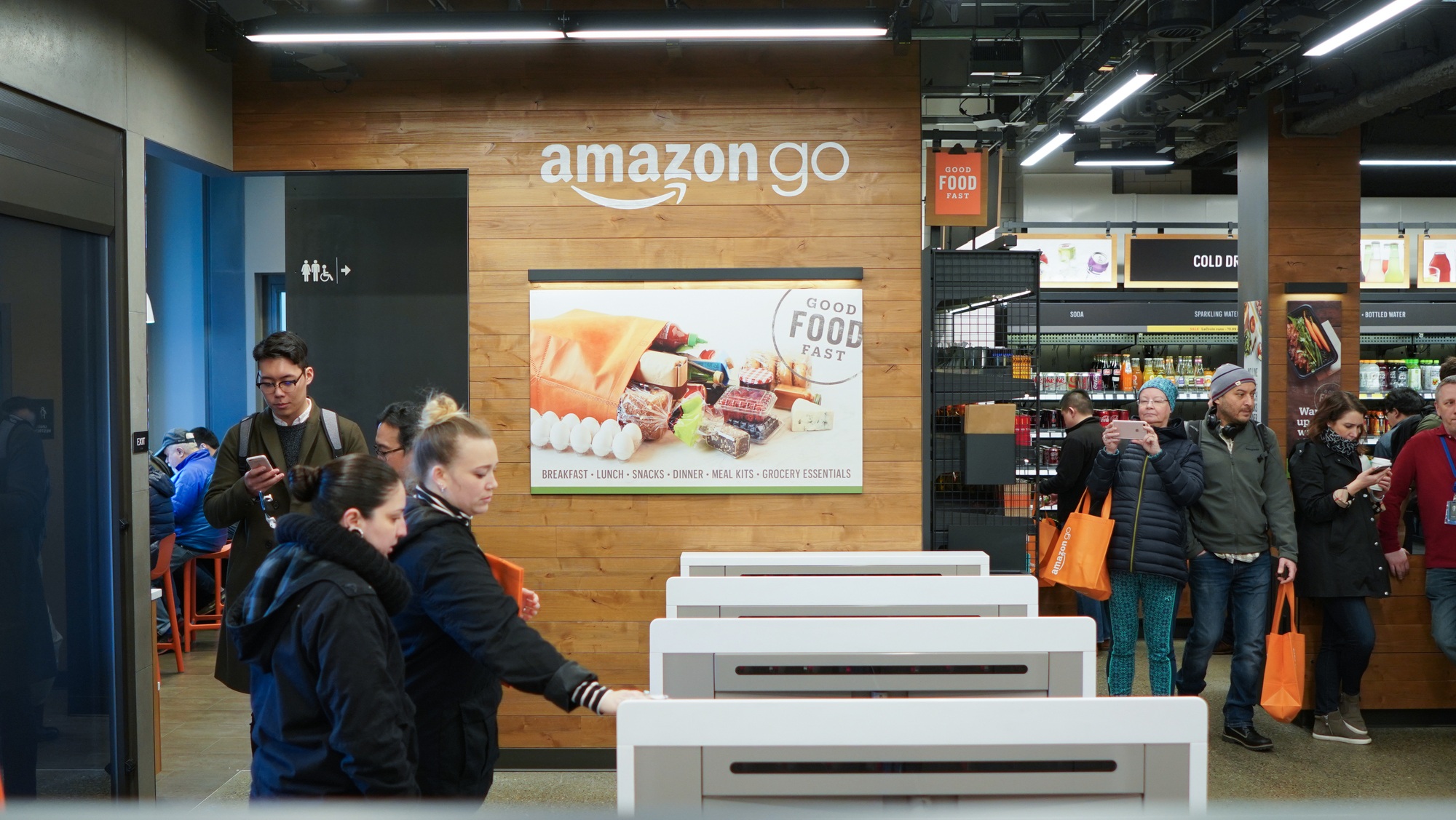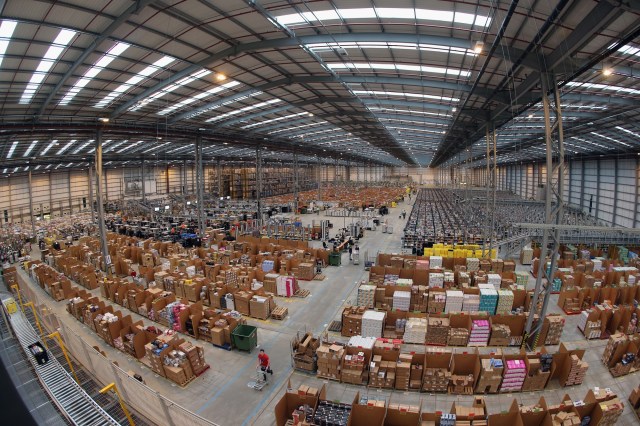Amazon 500,000 sq ft ‘fulfilment centre’ warehouse in Peterborough preparing for 2013’s ‘Cyber Monday’, (Photo by Oli Scarff/Getty Images)

Amazon is best known as an online retailer. But this month it opened a new store in Seattle called Amazon Go. In a fascinating piece for Stratechery, Ben Thompson tells us about it:
“The trick is that you don’t pay, at least in person: a collection of cameras and sensors pair your selection to your Amazon account — registered at the door via smartphone app — which rather redefines the concept of ‘grab-and-go’.”
That means no check-outs, not even those annoying automated ones.
This is convenient for shoppers, but even more convenient for Amazon. As Thompson explains, paying a cashier to sell your products is a marginal cost. The more you sell, the more man hours you need at the check-out (and to supervise the cashiers and to manage the supervisors and so on and so forth).
If, however, you can automate the process – with shoppers providing the only human input – then you’ve got a very different business model:
“…the massive expense that went into developing the underlying system powering cashier-less purchasing does not need to be spent again… the output of that expense can be duplicated infinitely without incurring any additional cost.”
Like selling software or online advertising, retail becomes an eminently scalable business – and scaling-up is something that Amazon is famous for.
Expanding businesses tend to follow one of two models. The first is vertical integration, when a firm acquires capacity at different stages of a supply chain. For instance, a vertically integrated energy company not only sells electricity to consumers, it also generates that electricity in its own power stations. Such a business is its own supplier and its own client, with the benefits that brings in reliability and specialisation.

Horizontal integration goes the other way – i.e. when a business spreads out along a particular stage of a supply chain by growing its market share. This might happen by acquiring, merging with or closely cooperating with former rivals. Whatever the means, the benefits include a broader customer base, less competition, greater market power and the acquisition of new capabilities and product lines.
Thompson notes that “to be both horizontal and vertical is incredibly difficult”. Nevertheless, Amazon has managed it – diversifying and specialising at the same time. Its business model is, therefore, both complex and coherent, with a breadth of market share and a depth of know-how that is beyond the ability of competitors to emulate.
Of course, expanding in all directions requires money and lots of it, but that’s the point:
“…willingness to spend is what truly differentiates Amazon, and the payoffs are tremendous…spending is painful in the short-term — which is why most software companies avoid it — but it provides a massive moat.”
Amazon is like a charging elephant, simply too big and too fast to be taken down; but is that the only point of its business model?
In my view, the company has another objective in mind. By operating, up, down and across a broad front of supply chains, Amazon has total control over an entire retail ecosystem. That gives it the freedom to reconfigure and standardise products, packaging, logistics and just about everything that makes it all work. This vastly increases the scope for automation.
There is an ever-increasing list of individual tasks that be entrusted to robots. Most jobs, however, involve a number of inter-related tasks – and even if just one of these is too fiddly for a machine to cope with, then that presents a barrier to automating the job.
For instance, it is well within current capabilities to build a robot than can read the numbers on a conventional electricity meter. However, if it can’t also ring a doorbell, ask the householder if it can take a meter reading, walk into the house and locate the meter, then it can’t do the job currently done by humans. The trick, of course, is to do the job in a different way – in this case by switching to smart meters than can automatically send the required data straight from the customer to HQ via a phone line.
By controlling factories, warehouses, transportation networks and outlets – and the interfaces between each of these operational components – Amazon can go further and faster than its competitors in making itself robot-ready.
The implications are profound:
“Karl Marx was born 200 years ago. Technology like Amazon Go is the ultimate expression of capital: invest massive amounts of money up front in order to reap effectively free returns at scale. What has fundamentally changed, though, is the role of labor: Marx saw a world where capital subjugated labor for its own return; technologies like Amazon Go have increasingly no need for labor at all.”
Ben Thompson suspects that “in five to ten years the countries Amazon serves will be blanketed with Amazon Go stores.” I suspect he might be right. I also suspect that most of our politicians haven’t got the first clue what’s heading our way.










Join the discussion
Join like minded readers that support our journalism by becoming a paid subscriber
To join the discussion in the comments, become a paid subscriber.
Join like minded readers that support our journalism, read unlimited articles and enjoy other subscriber-only benefits.
Subscribe